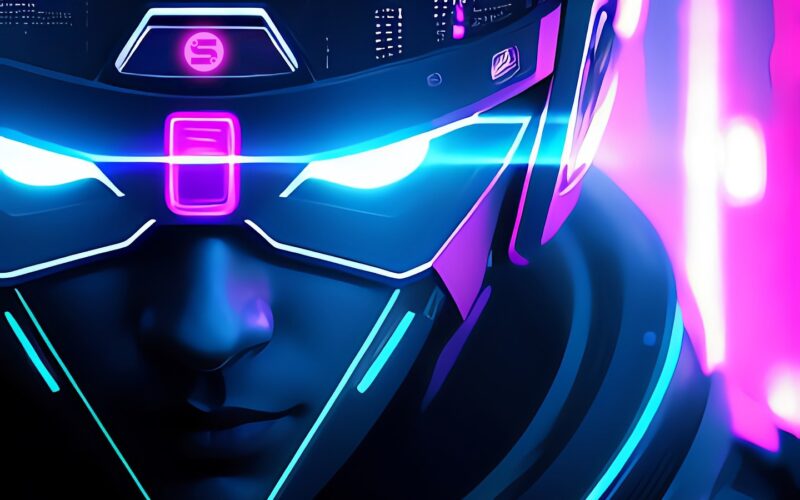What is artificial intelligence?
Unlocking Artificial Intelligence: Exploring the Frontiers of Technology

In the ever-evolving era of technology, terms like “Artificial Intelligence” ( AI) are becoming increasingly common. AI is one of the most exciting and revolutionary innovations of our time, influencing a wide range of industries, from virtual assistants to advanced medical diagnostics. In this article, we will dive into the depths of what artificial intelligence is, how it operates, where we find it, and what its implications are.
What is artificial intelligence?
Artificial Intelligence, often abbreviated as AI, is an area of technology that involves creating systems capable of simulating human thinking and decision-making. Unlike traditional programming, which involves defining specific commands, AI allows machines to learn from data and experiences, making them capable of performing complex tasks and even making autonomous decisions.
Types of Artificial Intelligence
There are two main types of AI: weak (or narrow) AI and strong (or general) AI. Weak AI is designed to perform specific tasks such as speech recognition, language translation, and playing chess. It operates within a limited scope and has no true awareness or understanding. Strong AI, on the other hand, seeks to replicate human intelligence in its entirety, including understanding, reasoning, and emotions. However, strong AI is still a challenging and controversial goal.
Historical Roots
Although AI may seem like a modern innovation, its roots go back decades. In 1956, Professor John McCarthy coined the term “artificial intelligence” during a conference that brought together experts to discuss the creation of intelligent machines. Since then, AI has evolved from “intelligent agents” that perceive the environment and make decisions based on patterns and data.
Fundamental Pillars of AI
The construction of artificial intelligence involves three essential pillars:
- Solid Data Models: For AI to work, it needs data. Well-developed data models enable the machine to understand and analyze information relevant to the task at hand.
- Huge Amount of Data: AI requires a huge volume of data to learn and make accurate decisions. This is known as “big data” and is one of the foundations for how AI works.
- Affordable Computing Power: With the increasing processing power of computers and the advent of cloud computing, AI has become more viable and accessible.
How AI Learns
Learning is at the heart of AI. Just as a child absorbs information and learns gradually, so does AI. It uses machine learning algorithms and techniques like deep learning to analyze patterns in data, identify trends, and improve performance over time. The more data it has, the more accurate and intelligent it becomes.
AI applications
AI has already become deeply integrated into our lives. It is present in sectors such as healthcare, finance, manufacturing, entertainment and more. Here are some notable examples:
- Virtual Assistants: Platforms like Siri, Alexa and Google Assistant use AI to understand and respond to voice commands. These virtual assistants make interactions more natural and effective, allowing users to perform tasks, obtain information, and control devices through voice commands.
- Medical Diagnosis: In healthcare, AI is being used to analyze medical images, helping doctors detect diseases early. AI algorithms can identify subtle patterns in imaging studies, increasing diagnostic accuracy and enabling more effective treatments.
- Automobile Industry: The automotive industry is being transformed by AI, especially with the development of autonomous cars. These vehicles use advanced AI sensors and algorithms to safely navigate roads, reducing accidents and providing a more efficient driving experience.
- Customer Service: AI-powered chatbots are becoming an essential part of customer service. Companies across industries use chatbots to answer frequently asked questions, troubleshoot simple problems, and direct customers to appropriate resources. This streamlines support, offering quick responses and 24/7 availability.
- Personalized Recommendations: Streaming platforms such as Netflix and Spotify use AI to analyze users’ viewing and listening history. Based on this data, AI generates personalized recommendations for films, series and music, providing a tailored entertainment experience.
- Personalized Education: AI is also being applied in education, allowing the creation of personalized learning systems. E-learning platforms use AI to adapt content according to individual learners’ progress and needs, making learning more efficient and engaging.
- Machine Translation: Machine translation tools, like Google Translate, use AI to instantly translate text between different languages. These tools are breaking down language barriers and facilitating global communication.
- Generative AI for Creativity and Innovation: Generative AI technologies are transforming creativity and innovation in diverse fields. Models like ChatGPT and Google Bard, are being used to generate ideas, projects and creative content.
Replacing traditional jobs
The rise of Artificial Intelligence (AI) represents a significant milestone in technological evolution, with the potential to transform the professional landscape. While AI can optimize processes and introduce efficiencies across various industries, it also raises concerns about replacing traditional jobs. Routine and repetitive functions, especially those involving manual tasks and predictable processes, are at risk of being automated, resulting in changes in the composition of the labor market. However, this transformation is not just destructive; the same technology that can eliminate some jobs also creates new opportunities. As mechanical tasks are delegated to AI, workers can focus on more creative, strategic and interactive activities that require unique human skills. This drives demand for professionals capable of collaborating with AI, such as developers, data engineers and AI analysts, creating a scenario in which jobs disappear but new careers emerge in response to the technological revolution.
The Future of AI
AI also faces significant challenges, including ethical issues, privacy, bias in data and impact on employment. However, the potential of AI is exciting. It can be used to solve complex problems, optimize processes and expand human capabilities.
Artificial Intelligence is redefining our relationship with technology. It is present in our daily routine, from virtual assistants to medical diagnoses. AI not only improves efficiency but also challenges our understanding of intelligence and thinking. With significant opportunities and challenges ahead, AI is at the heart of the next wave of innovation, shaping the future in directions we could never have imagined. It is a journey of discovery and transformation that has just begun.
